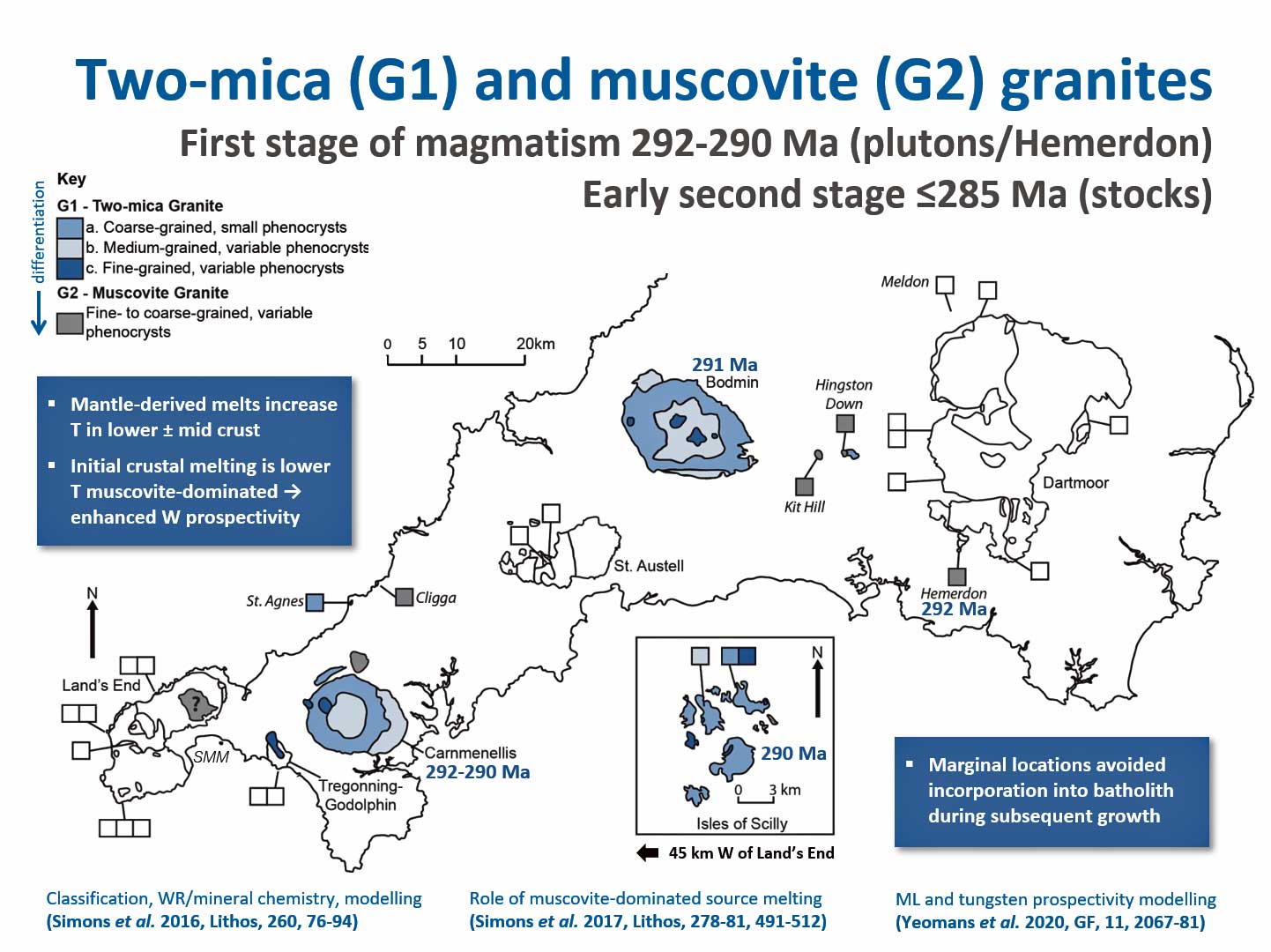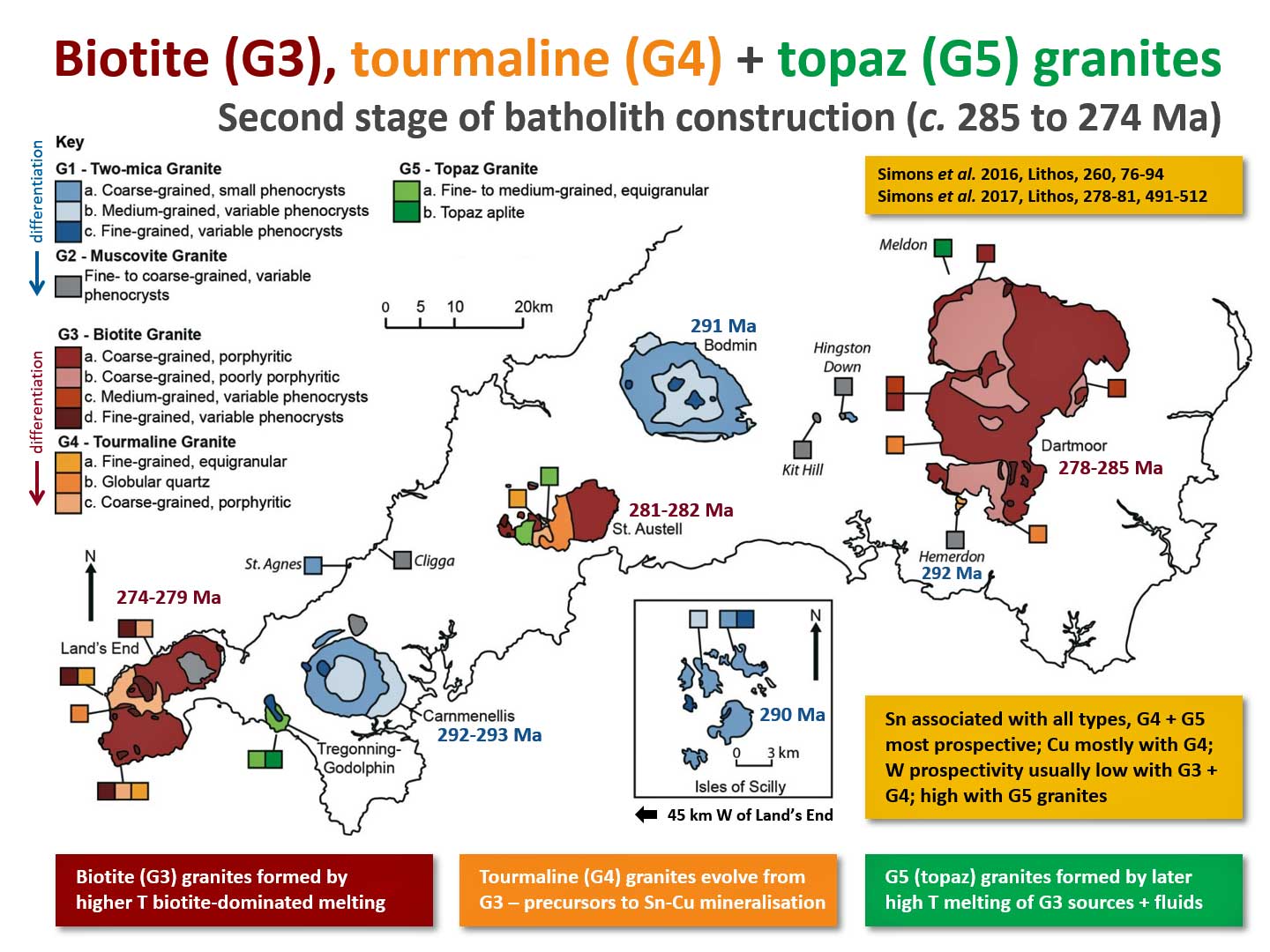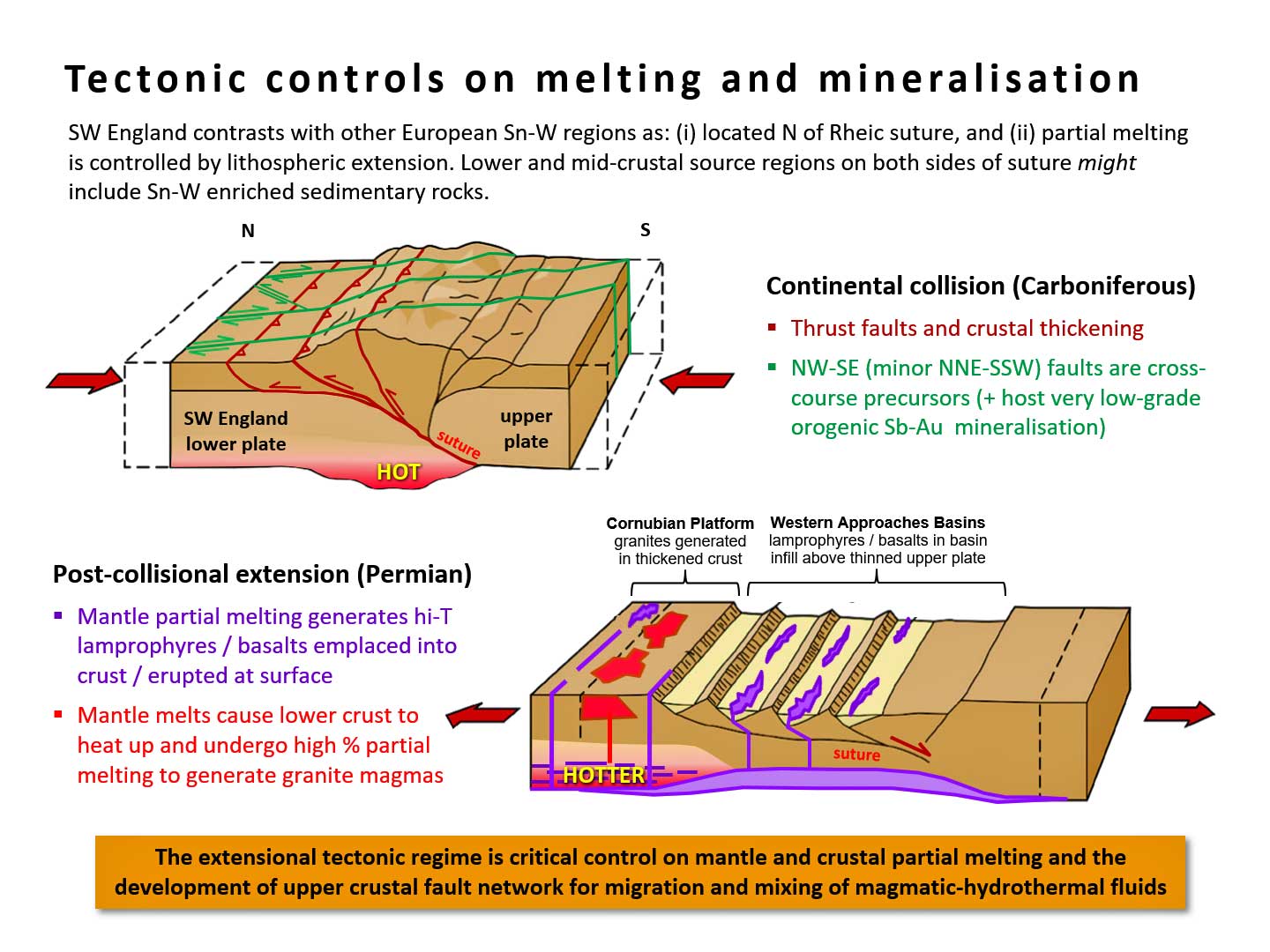- Homepage
- Key Information
- Students
- Staff
- PGR
- Health and Safety
- Computer Support
- National Student Survey (NSS)
- Intranet Help
Prof Robin Shail
SW England granites
Cornubian Batholith and associated igneous rocks (Early Permian)
The Early Permian igneous rocks of SW England and the adjacent continental shelf form one of the major igneous provinces in the UK. The best known expression of felsic magmatism is the Cornubian Batholith, comprising composite granite plutons, stretching eastwards from beyond the Isles of Scilly, through Cornwall, to Dartmoor in Devon. It is associated with subtantial rhyolite / microgranite intrusive sheets ('elvans') and the remnants of formerly more extensive rhyolite lavas and pyroclastic rocks. The smaller and separate Haig Fras Batholith crops out on the sea floor almost 100 km NW of the Isles of Scilly.
Two-mica (G1) and muscovite (G2) granites
The batholith was constructed over almost 20 Ma during the Early Permian. The most recent classification of near-surface granites by Simons et al. (2016) defines five principal types (G1-G5). The earliest expression of magmatism are the two-mica (G1) and muscovite (G2) granites, represented by the upper parts of the Isles of Scilly, Carnmenellis and Bodmin Moor plutons, and associated dykes and lavas (292-290 Ma). There was a brief hiatus in magmatism from 289-286 Ma and the initial expression of the second stage of emplacement are two-mica (G2) stocks, e.g. Cligga Head (<286 Ma).

Click image for larger version
Biotite (G3), tourmaline (G4) and topaz (G5) granites
The latter magmatic epsiode is primarily represented by the biotite (G3) and tourmaline (G4) granites that form the dominant near-surface expression of the Land's End, St Austell and Dartmoor plutons. The tourmaline (G4) granites formed by differentiation of the biotite granite magmas and are likely precursors to magmatic-hydrothermal mineralisation. Topaz (G5) granites have a limited near-surface expression, primarily in the Tregonning and St Austell plutons and the Meldon Aplite and have the highest lithium contents within the batholith.
Click image for larger version
Contemporaneous mafic igneous rocks
Less well known are the mafic igneous rocks that occur: (1) around Exeter, at or near the base of Permian post-Variscan sedimentary successions (lamprophyre and basalt lavas / sills), (2) in the pre-Permian Variscan basement further west (lamprophyre dykes), and (3) within the Permian post-Variscan sedimentary basins of the western English Channel and SW Approaches.
Tectonic controls on magmatism and mineralisation
Magmas were generated episodically over a 20 Ma period from c. 292 to 274 Ma, primarily by extensional thinning of continental lithosphere previously thickened during Variscan convergence. Mafic igneous rocks resulted from mantle partial melting and felsic igneous rocks largely by partial melting of the lower crust, albeit strongly influenced by underplating / emplacement of mantle-derived melts. Felsic magmatism was restricted to relatively narrow zones in the immediate lower plate / footwall of the Rhenohercynian / Rheic suture (generating the Cornubian Batholith) and the frontal segment of the Bristol Channel Fault Zone (generating the Haig Fras Batholith). The thermal evolution of the lithosphere and onset of partial melting was controlled by superposition of post-Variscan extension and Variscan convergence.
Click image for larger version
Work undertaken with others includes recognition of the role of extensional tectonics and mantle melting in lamprophyre and granite generation within the province (Shail and Wilkinson, 1994; Shail et al., 2003; Dupuis et al., 2015; Dupuis et al., 2016; Simons et al., 2016), characterisation of composite granite plutons (Powell et al., 1999; Salmon and Shail, 1999; Simons et al., 2016) and aplite-pegmatite sheets (Breiter et al., 2018), magmatic state fabric development (Kratinová et al., 2003; Kratinová et al., 2010), contact aureole tectonics and emplacement (Hughes et al., 2009; Pownall et al., 2012), characterisation of zircon chemistry (Breiter et al., 2016) and LA-ICPMS zircon dating (Neace et al., 2016).
The Lundy Granite (Palaeogene) . . . and now for something completely different . . . or is it?
The Lundy Granite, located in the Bristol Channel off the north Devon coast, forms part of the Lundy Igneous Complex, and is the southernmost substantive expression of magmatism within the British-Irish Palaeogene Igneous Province and the wider North Atlantic Igneous Province. Charles et al. (2017) provided the first U-Pb zircon ages for the granite and confirmed a Palaeocene age (59.8 ± 0.4 – 58.4 ± 0.4 Ma). Its Qz + Pl + Kfs + Bt ± Grt ± Tpz mineralogy and peraluminous character contrasts with similar age granites farther north but are similar to the granites of the Early Permian Cornubian Batholith.
The anomalous southerly location of the Lundy Igneous Complex is probably a consequence of mantle melting arising from the superimposition of localised lithospheric extension, related to intraplate strike-slip tectonics, with the distal ancestral Icelandic plume. Granite generation primarily reflects crustal partial melting during the emplacement of mantle-derived melts. The peraluminous character indicates a fundamental crustal source control between contrasting peri-Gondwanan (Lundy) and Laurentian basement provinces farther north.


